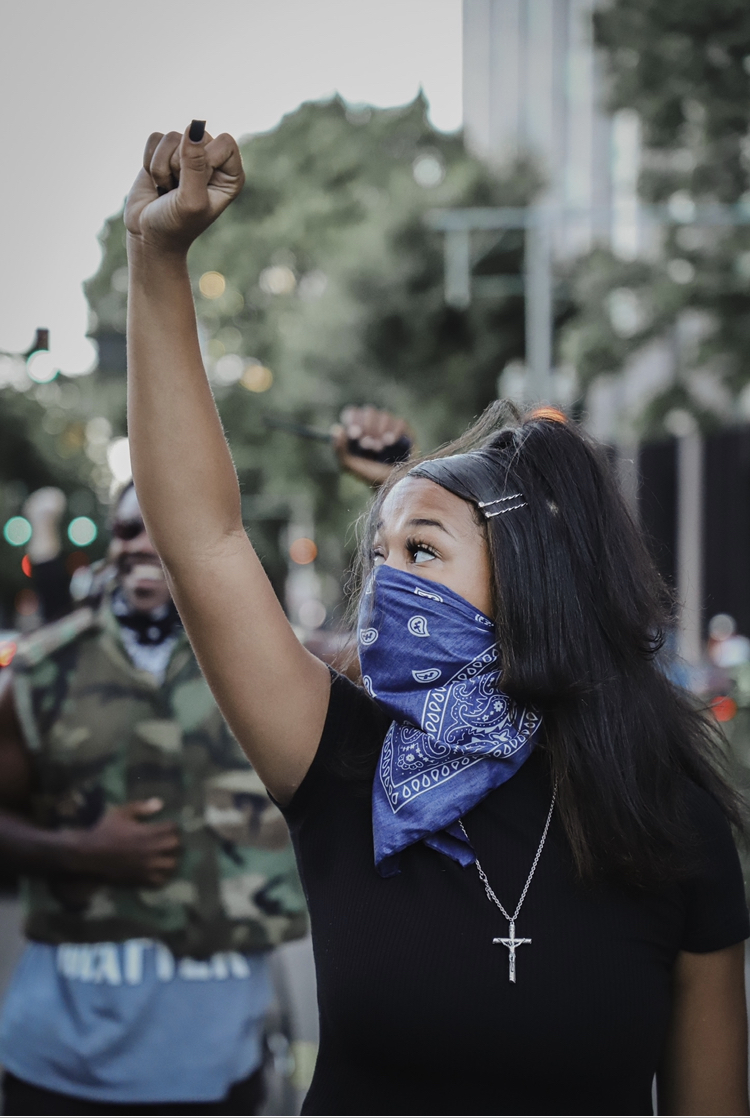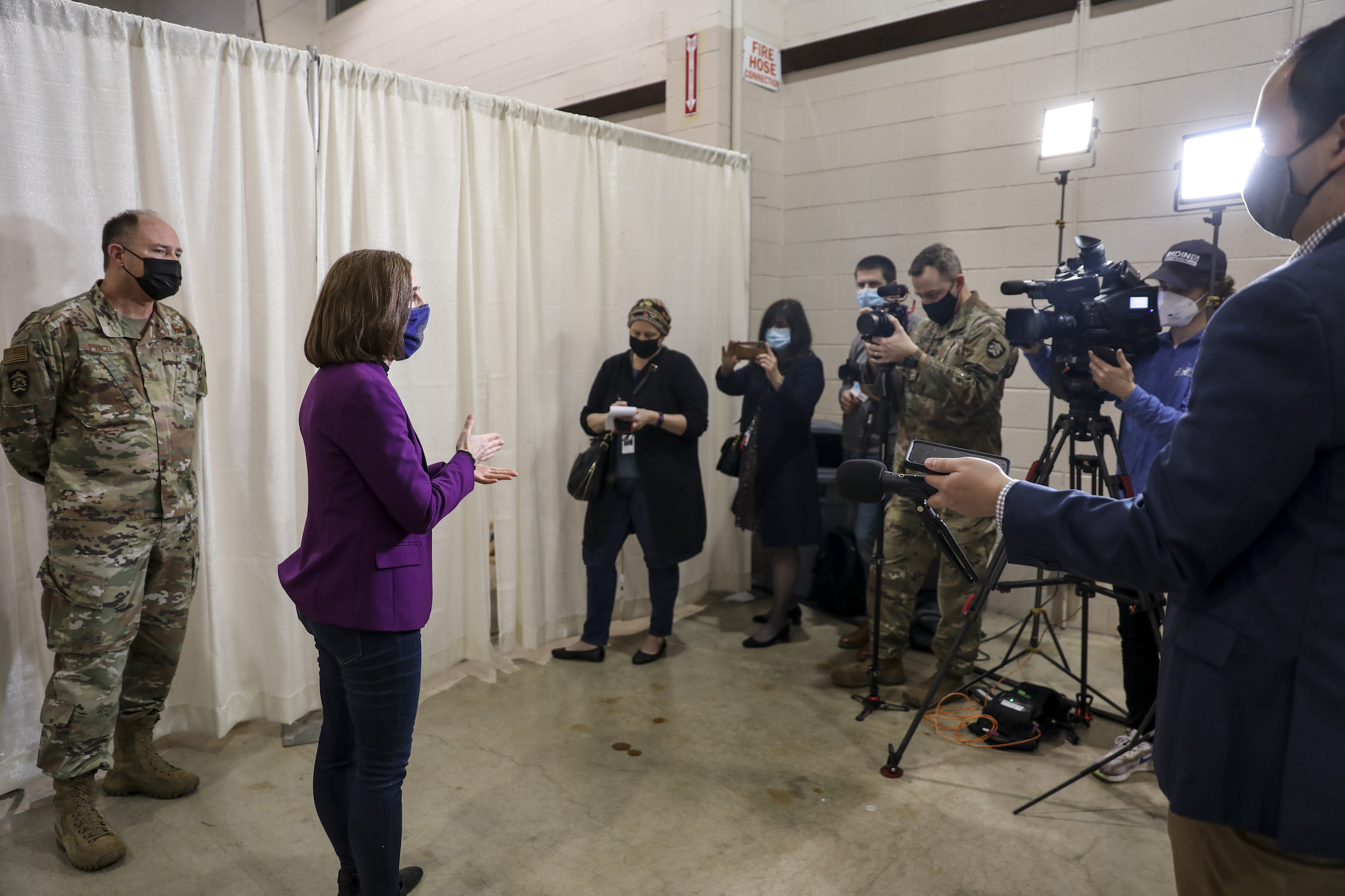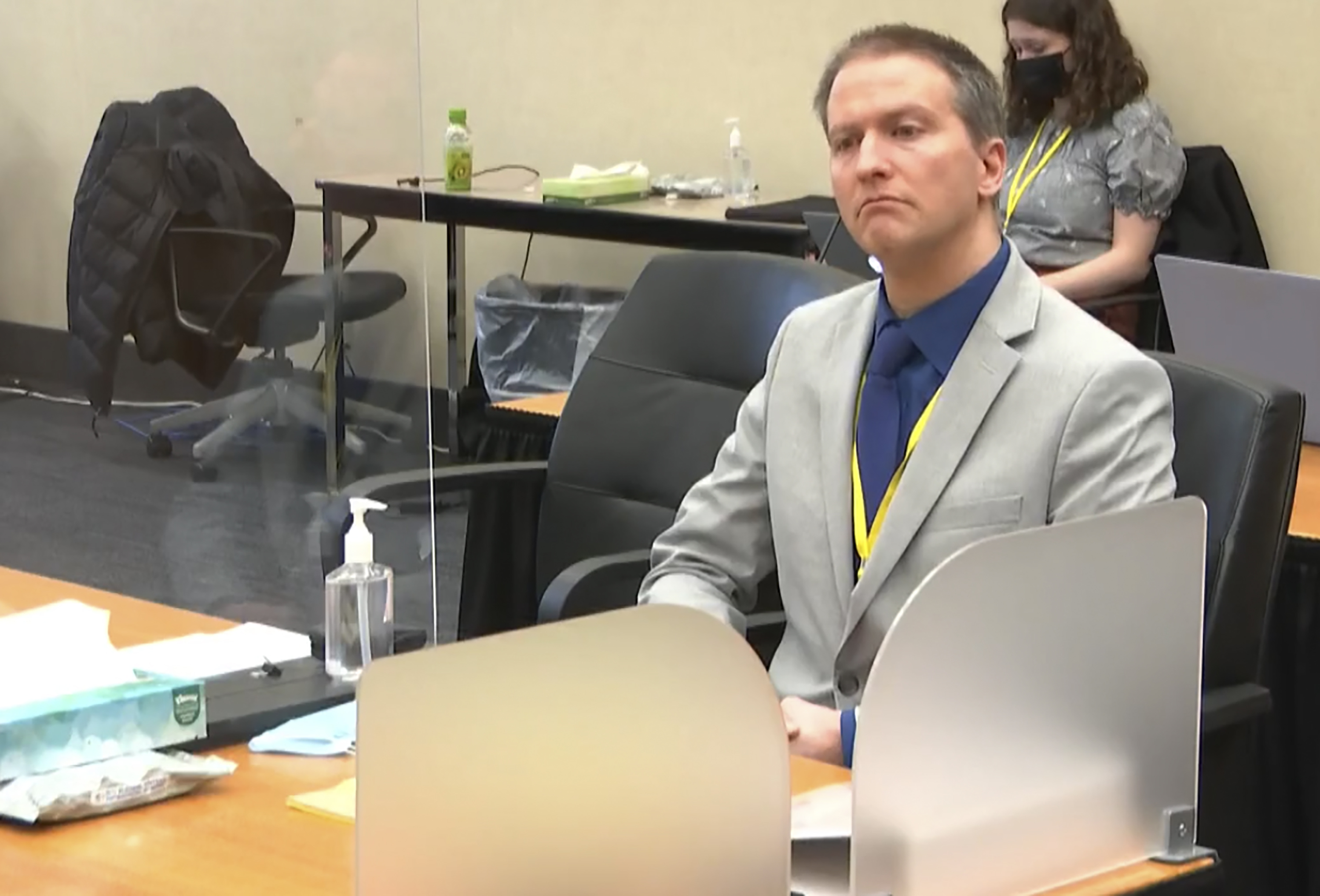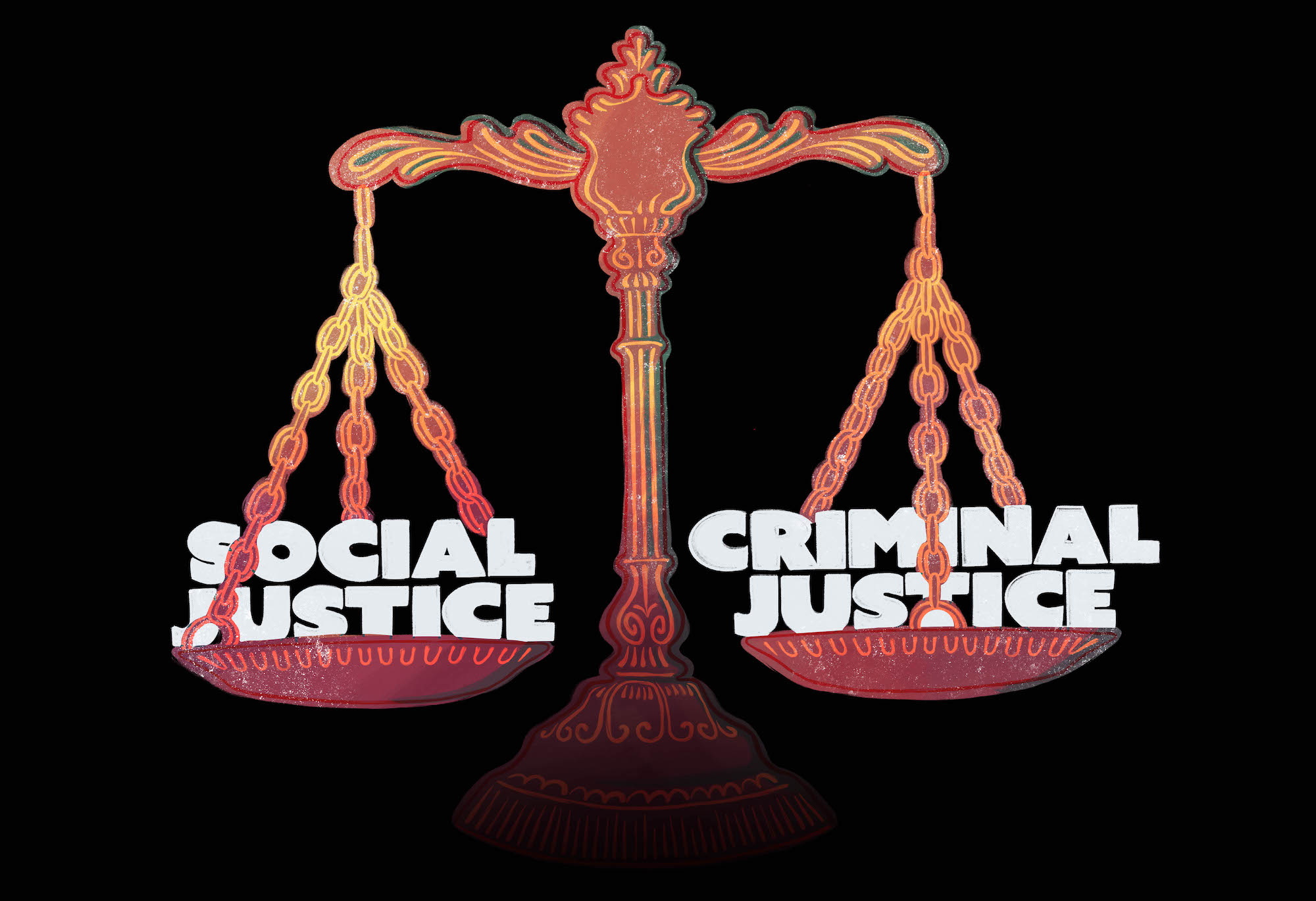In Portland, protests have diminished and police reform has stalled, leaving advocates for change in political limbo.
May 25 marked the one-year anniversary of George Floyd’s murder, after a Minneapolis police officer killed him during an arrest. On that anniversary, a crowd of an estimated 200 protesters in Portland gathered at the Multnomah County Justice Center and later Portland City Hall, where some in the crowd set fires and police declared a riot.
According to the Portland Police Bureau’s (PPB) Media Relations department, “Based on the criminal activity of people in the crowd, officers gave public address announcements that the assembly was unlawful. People threw frozen water bottles, glass bottles, eggs and metal spikes at officers and fired mortar-style fireworks at officers.”
Around midnight, after five targeted arrests, the crowd size decreased to an estimated couple dozen protesters still present in the downtown area, and no further relevant criminal activity was reported.
The size of protests currently is far smaller than those that took place in early June of 2020, when a crowd of thousands walked across the Burnside Bridge and took to downtown Portland, demanding justice and reform.
Mayor Ted Wheeler gave a press conference the morning of June 2, 2020 and said that he and other political and society leaders must act in order to address the systemic racism at the heart of these types of injustices.
“Until we get to the ‘OK, we’ve now heard it, we’ve acknowledged it’, so what concrete actions are we taking next?” Wheeler said during the press conference. “I want to hear more from the community about what they think we should do.”
Over the past year, protesters have made it clear the reforms they want from Wheeler and the Portland City Council: less police violence against people of color, re-allocation of resources toward community-focused programs, and more accountability for officers’ actions.
At the state level, there has been reform, with a flurry of bills in late June 2020, on the heels of Floyd’s death, coming out of the Oregon State legislature.
H.B. 4203 bans the use of chokeholds except when using deadly force is “warranted,” H.B. 4205 mandates officers take action to “prevent or report a fellow officer engaged in misconduct” and S.B.1604 makes it more difficult for arbitrators to “overturn police disciplinary findings.”
H.B. 2002, a yet-to-pass sweeping legislative proposal, would scale back the criminal justice system’s authorities and reach, with reforms in minimum mandatory sentencing and what sends a person to jail or simply cites them, among many other alterations to a person’s interaction with the legal and penal system.
Advocates for police reform in Portland argue now that promises for change have not been kept by the mayor or Portland City Council, and independent journalists on the ground at protests throughout Oregon have seen the same behavior from police as last year, and even infiltration and disruption of Black Lives Matter protests by far-right activists.
“Unfortunately, I don’t even know if we are pointed in the right direction,” said Shannon Wright in an interview with OPB. Wright is the deputy director for the Partnership for Safety and Justice, which fights for criminal and police reform in Portland and Oregon as a whole.
As for the protests specifically, from Eugene and Springfield to the streets of Portland, the Black Lives Matter protests and anti-ICE protests are steady, but lack the size and influence they once did, according to James Croxton, the managing editor for Double Sided Media and contributing reporter for The Village Portland.
“A lot of these protests have fizzled out into nothingness,” Croxton said. “Most of my time I spend in Portland is now at these ICE protests, which don’t seem to be going anywhere. But even that is often just a couple dozen of protesters, sometimes maybe 100, and even then, it is only the really dedicated ones.”
The United States Immigrations and Customs Enforcement (ICE) facility and detention center in Southwest Portland has been a consistent site for protests over the last year.
For Croxton, another concern is the ICE facility’s close proximity to the Cottonwood School of Civics and Science, a public charter school, which has been exposed to many evenings of tear gas and other chemical munitions since when the protests began last May.
“Another major thing from the ICE protests is that people actually know what the place is now,” Croxton said. “I mean, it’s right next to a K-8 [charter] school. With schools opening back up, and kids going back to school, the playground has essentially been condemned from chemical saturation.”
Tear gas is prohibited under the 1925 Geneva Protocol, and its use in both warfare and domestically as a riot control agent is often considered a human rights violation by international organizations like Amnesty International and civil rights groups like the ACLU.
According to Sven Eric Jordt, associate professor of anesthesiology at Duke University, in a 2018 interview with CNN, tear gas is particularly unhealthy for the underdeveloped nature of a child’s immune system, lungs and other bodily functions and long term side-effects can follow.
“Children are especially at risk because tear gas is heavier than air. It is present in higher concentrations closer to the ground, and children, being shorter, are exposed to higher concentrations,” stated Jordt.
Cory Elia, managing editor of the Village Portland and podcaster for KBOO, has noted there are further consequences from the protests over the past year, in regard to the tactics utilized by the Portland Police Bureau (PPB) and other law enforcement agencies across the state.
“There are a massive amount of people suffering from post-traumatic stress disorder from all the violence that went on between police, or federal agents, last summer,” Elia said. “But I do foresee that there will be protests this upcoming summer, for sure. They are just going to be severely diminished.”
“[It seems like] they are using new tactics…where the police mainly remain standoffish, and utilize targeted and specific arrests to try and quell the protests’ energy and momentum, simply allowing the protests to dissolve internally.”
“I’m optimistic that people will show up in numbers [this summer], however, there is a lot of concern within the protest community about the informants being found in individual protests and cited in news reports,” Croxton said.
“The truth of the matter is, there are informants, and they are either police, federal agents, or far-right provocateurs, sometimes all three,” Croxton said. “You see this in Eugene, in Springfield, and definitely in Portland.”
Croxton was referencing a specific alleged incident in the neighborhood of Thurston, in eastern Springfield, where the Black Unity Organization and Civil Liberties Defense Center have sued the Springfield Police Department for colluding with and assisting far-right wing militia.
“The complaint stems from the events at the now-infamous Black Unity-led protest in Thurston last July, which saw SPD use excessive force on peaceful protesters, while ignoring the violence and threats coming from far-right counter protesters,” Croxton stated in a Double Sided Media article.
Croxton was on the ground during these protests in July 2020, and reported on the events extensively. Croxton said he faced counter-protest intimidation and police violence first hand, or watched it happen to others.
“July 29 was the most violent day in Springfield in 2020,” Croxton said. “Springfield P.S. essentially caused a riot, they tased people, one of the leaders had a knee on their neck; bones were broken. Then as we were leaving, the fascists showed up and were caught on live stream coordinating with the SPD. There is currently a lawsuit pending, so we’ll see.”
This is not uncommon for law enforcement to be affiliated with, or even occupied by far-right groups like the Proud Boys, Three Percenters and Boogaloo Boys. The FBI’s Counterterrorism Division stated white supremacy groups and far-right militia groups have infiltrated on a large scale many law enforcement agencies across the U.S.
According to a report from the Brennan Center for Justice, white supremacists have “produced more fatalities than any other category of domestic terrorists since 2000.” The FBI issued a report in 2017 titled “White Supremacist Extremism Poses Persistent Threat of Lethal Violence” detailing incidents of white supremacist violence between 2000 and 2016, arguing such violence would likely continue in the future.
“Regarding the future, I have no idea what will happen,” Croxton said. “All I know is that people in our communities are angry and some are willing to act. It has been over 365 days since George Floyd was murdered by Derek Chauvin and, yet, over 1000 people have been killed at the hands of law enforcement—mostly including our BIPOC community.”
“If people want to make a change, they need to educate themselves, and they need to get out and fucking protest, let people know how they feel,” Elia said.






